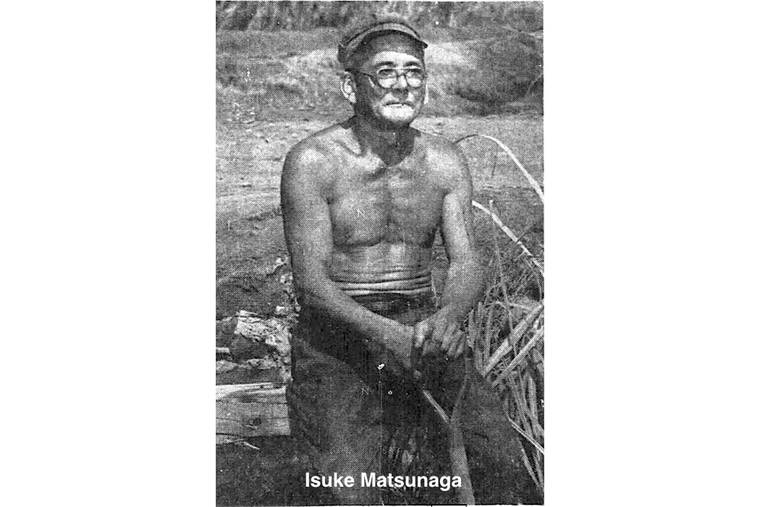Born in Koloa, Isuke Matsunaga (1902-82) was a longtime employee of Lihu‘e Plantation known for his prowess as a hapai ko (carry sugarcane) man in his younger days, who represented Lihu‘e Plantation in hapai ko contests with other Kaua‘i sugar plantation hapai ko men.
Prior to the 1930s, when cranes with mechanical grabs were first used to load sugarcane into railroad cane cars in the cane fields for delivery to sugar mills, large gangs of men harvested sugarcane manually.
They would cut cane stalks close to the ground with cane knives that hapai ko men would lift onto their shoulders in bundles weighing 50 to 75 pounds and carry to the cane cars, where they would trudge up wooden ramps and toss the cane inside.
They toiled six days a week, 10 hours a day, week in and week out.
Still, they took pride in their work, and competitions were held to determine which sugar plantation had the best hapai ko men.
For many years Matsunaga represented Lihu‘e Plantation in these contests.
He’d begun hapai ko work at the age of 14, when he quit school to help his family labor in the cane fields, and worked alongside six other youngsters of the Matsunaga family.
They would load as many as 30 cane cars per day, with each car having a capacity of 8 to 9 nine tons, which amounts to as much as 38 tons plus for each Matsunaga in a 10 hour day!
One notable hapai ko contest occurred on May 31, 1919 ,in Lihu‘e, with each competing plantation entering at least one, two-man team.
McBryde Sugar Co.’s team won that contest with 10,375 pounds of cane loaded in 30 minutes.
Isuke left Lihu‘e Plantation 1923 to work on a Kekaha Sugar Co. irrigation ditch.
Later, he worked on the Hanalei Tunnel project for Lihu‘e Plantation.
He also worked on construction projects on O‘ahu, Maui and around Mount Waialeale, before returning to work at Lihu‘e Plantation in 1933.
Matsunaga retired from Lihu‘e Plantation as an irrigation construction worker.
He and his wife, Tsuru, had five sons and three daughters.


